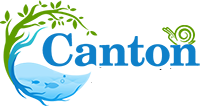Discover the essential care instructions for maintaining healthy red root floaters in your aquarium.

Understanding Red Root Floaters
Red root floaters, also known as Phyllanthus fluitans, are floating plants that can be a beautiful addition to your aquarium. They have vibrant red roots that hang down in the water, while the leaves float on the surface. These plants are native to South America and are known for their ability to absorb excess nutrients from the water, helping to prevent algae growth. Understanding the specific needs of red root floaters is crucial for their successful care and maintenance in your aquarium.
Another important aspect of understanding red root floaters is their growth and behavior. These plants can reproduce rapidly under optimal conditions, forming dense mats on the water's surface. They are also very sensitive to changes in water quality and temperature, so it's important to monitor these factors closely. By understanding the unique characteristics of red root floaters, you can provide them with the best care possible.
Lighting and Water Requirements
Proper lighting is essential for the healthy growth of red root floaters. These plants require moderate to high lighting levels to thrive. You should provide them with at least 6-8 hours of light per day, ideally using full spectrum LED lights. This will help promote photosynthesis and ensure that the plants receive the necessary energy to grow and develop.
In addition to lighting, water quality is also crucial for the well-being of red root floaters. These plants prefer slightly acidic to neutral water with a pH range of 6.5-7.5. It's important to monitor and maintain stable water parameters, including temperature and hardness, as fluctuations can stress the plants. Regular water changes and the use of a water conditioner can help ensure that the water remains clean and suitable for red root floaters.
Nutrient Needs and Fertilization
Red root floaters have specific nutrient requirements to support their growth and overall health. These plants primarily obtain nutrients from the water column, absorbing dissolved nutrients through their roots and leaves. It's important to ensure that the aquarium water contains an adequate supply of essential nutrients, including nitrogen, phosphorus, and potassium.
To meet the nutrient needs of red root floaters, you can consider adding a liquid fertilizer specifically formulated for aquatic plants. This will help provide the necessary nutrients that may be lacking in the aquarium water. It's important to follow the dosage instructions provided with the fertilizer and avoid over-fertilizing, as it can lead to algae blooms and other issues. Regular monitoring of nutrient levels and plant growth can help determine the appropriate fertilization schedule for your red root floaters.
Propagation Techniques
Red root floaters are known for their rapid growth and ability to propagate easily. They can reproduce through both vegetative and sexual reproduction. Vegetative propagation occurs when the plants produce daughter plants, also known as plantlets, from the main plant. These plantlets can be separated and replanted to establish new colonies.
Sexual reproduction, on the other hand, involves the production of flowers and seeds. However, it should be noted that red root floaters rarely produce flowers and seeds in aquarium conditions. Therefore, vegetative propagation is the most common and effective method for propagating these plants.
To propagate red root floaters through vegetative propagation, simply separate the daughter plants from the main plant and attach them to a suitable substrate or let them float freely on the water's surface. With proper care and maintenance, these plantlets will grow into new healthy plants, adding to the beauty of your aquarium.
Common Issues and Troubleshooting
While red root floaters are relatively easy to care for, they can still encounter some common issues. One common issue is the accumulation of debris and organic matter on the plant's leaves and roots. This can lead to poor growth and even rotting of the plant. Regularly removing any debris and gently cleaning the leaves and roots can help prevent these issues.
Another common issue is nutrient deficiency, which can manifest as yellowing or browning of the leaves. This can be resolved by ensuring that the aquarium water contains an adequate supply of essential nutrients. Adjusting the fertilization regimen or adding a nutrient supplement may be necessary to address nutrient deficiencies.
Lastly, red root floaters are sensitive to sudden changes in water conditions, particularly temperature and pH. Rapid fluctuations can stress the plants and lead to their decline. It's important to maintain stable water parameters and avoid drastic changes. Gradual acclimation to new water conditions can help minimize stress on the plants.
By being aware of these common issues and taking proactive measures to address them, you can ensure the continued health and vibrant appearance of your red root floaters in your aquarium.
Why Are The Roots Not Red?
If you're wondering why your red root floater roots are not red, there could be several factors at play. One possible reason could be insufficient lighting levels in your aquarium. Red root floaters require moderate to high levels of light to maintain their vibrant red coloration. Ensure that they are receiving at least 6-8 hours of light per day, preferably from full spectrum LED lights. Another factor to consider is nutrient deficiency. If the plants are not receiving an adequate supply of essential nutrients like nitrogen, phosphorus, and potassium, their roots may lose their red hue. Consider adding a liquid fertilizer formulated for aquatic plants to ensure they are getting the nutrients they need. By addressing these factors, you can help your red root floaters regain their vibrant red roots and thrive in your aquarium.





Leave a Comment